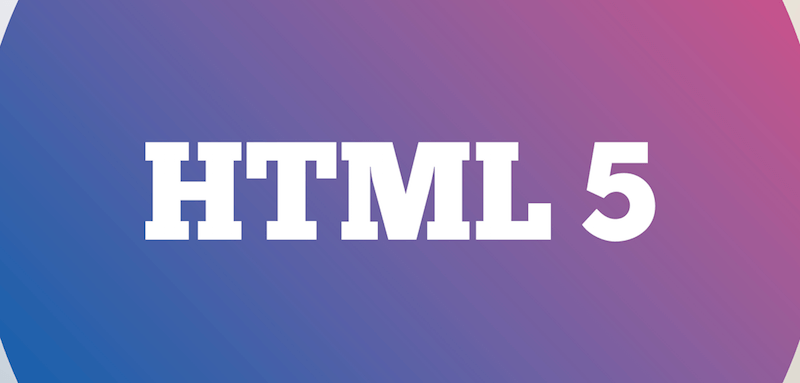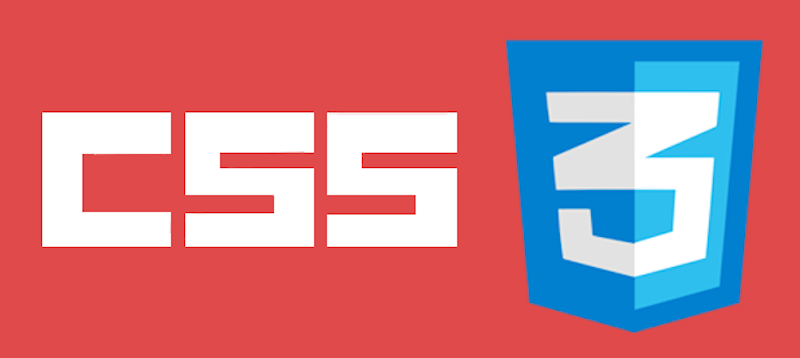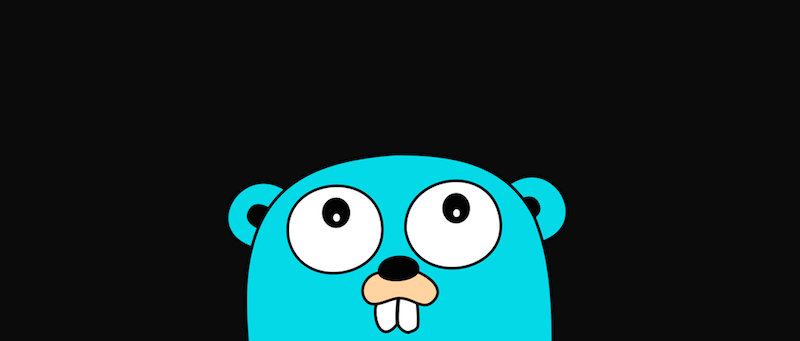The Best Programming Languages to Learn in 2023
Wondering the best programming languages to learn today to ensure that you have made the right choice for many years to come?
Programming (coding) is the technology fuel. Programming can be a vital skill that could help you take a new and advantageous career route. It’s not uncommon for seasoned programmers to earn $100,000-$300,000+ annually. Those kinds of wages, combined with the exotic benefits companies like Google and Facebook give their employees, can be hard to resist.
Programming is free to learn, and textbooks tend to be cheap. Whenever you are learning a new programming language, 75% of the time you’re referring to the documentation, and a lot of time is spent asking questions on popular developer websites like StackOverflow. Programming is accessible to anyone willing to learn a new, technical language and use it to create amazing things.
Programming’s Wide Spectrum
Colorlib isn’t a stranger to programming either; our themes have been “coded” using PHP, CSS, and JavaScript. Active web development is what we call the area that we work within, mostly front-end. There are many areas on the web where one can use programming to create something great, such as mobile applications, or desktop computer software. Each programming language has something unique to offer, some are only for the browser, while some are only for the server. The rockets that NASA builds, the ones that go to space? They’re only possible because of programming and how programming interacts with engineering and technology. It’s fascinating.
We live in 2023, yet there are many agendas, stipulations, and general opinions on which programming languages are the most suitable for beginners. Out of hundreds of languages, there are only a handful that you can consistently use both for front-end and back-end development. And our main idea for this post is to talk about the programming languages that are high in demand by modern companies and startups, and languages that offer a quick learning curve regarding available free resources for learning. The following results have been made possible through our thorough research in many developer surveys, and developer questions where developers share their favorite languages to work with. It’s never too late to become a coder; their demand is much higher than the supply and will remain for many years.
Here are the best programming languages to learn today that will be relevant for many years.
JavaScript
You will find JavaScript everywhere you go on the web. The V8 JavaScript Engine has helped shape the future of web browsers, particularly for Google Chrome. JavaScript is used in front-end development to build desktop, mobile, and software applications from simple page-to-page interaction. Interactive web scripting languages like jQuery are direct branches of JS, and we will discuss them separately as we move through the languages. JavaScript’s strong side is the web frameworks that have helped tone the experiences that developers have with developing for the web using JavaScript. Meteor, Angular, and React are common frameworks used to build enterprise-level apps with solid performance and security benchmarks.
We also can’t forget about Node.js, which grew directly out of JS, and is now the most utilized asynchronous language on the planet. And what about the learning curve? The number of learning paths for JS has exploded. As late as a decade ago, one would have needed to spend months learning from a textbook; now, those learning practices are replaced with interactive and dynamic tutorials, books, and gamified learning platforms. Fascinating language that has helped to create the web what it is today. Front-end developers are in such high demand that an experienced JS developer can expect a starting salary of up to $100,000 when working for any of the leading startups today. Building and bootstrapping your startup is also a possibility.
JavaScript Resources:
SQL Server

Anyone who uses the web will have different levels of understanding about making a web page appear the way it does. For example, the text you are reading right now needs a “storage” so that you can re-access it at any given time. In this case, we call that storage the MySQL server. A popular database type that all WordPress blogs use, unless have been customized to use external databases like MongoDB, though very unusual.
Now, think about the rest of the world’s websites and the database types. Think about Google and Netflix. All those search results and movies you want to watch are all stored in the database so that whenever a user makes a new request, the server can fulfill it by doing a database query. So naturally, the SQL language is highly sought after because ofitss complexityo back-end development, and seasoned SQL developers can earn salaries that range in $200,000 — easily! Apart from stitching together database queries, one will need to learn how to cache, optimize, and deliver the queriesto never lose performance are also often victims of security attacks, which is another area that SQL developers will need to learn how to cover.
Java

One may consider Java as one of the pioneering programming languages that shaped the interactions between the user and the application. Billions of devices, browsers, smartphones, car devices, etc use it. It’s also most commonly used to deliver an interactive experience to the web. For example, the majority of the web browser games that we play or know of are built using Java, especially now that Flash has seen a massive decline. Java was born as a branch for C++ because C++ was so difficult to learn. You can use Java to help and minimize syntax difficulties. It’s also object-oriented, making it more reliable and robust.
Moreover, Java has a track record of being the most secure programming language,pparticularly foration development. You wouldn’t want to put vulnerable applications into your car; that’s where Java comes in and gets the job done. It’s also an independent programming language and will work on any operating system you try to launch. Java developers can enjoy high-level salaries and will usually get hired rather quickly.
Java Resources:
PHP

Another highly evolved web language is PHP. The page you are viewing right now has been executed and delivered using plain PHP, the s blogging platform’s language often seen as insecure, unreliable, and slow in performance benchmarks, not many programming languages can come close to the level of use that PHP has, and will continue to have for many decades to come. There’s no reason experienced PHP developers should abandon their existing skills for something new, since the traditional still works well. Do a simple Google query on why developers hate PHP iso much, and security concerns will become the leading issue. But, it also speaks of the incompetence that certain developers have towards their code, because secure PHP applications and software can easily be built.
Facebook is still using a lot of PHP code for their back-end infrastructure. Even though a few vulnerabilities are infrequently reported, they’re insignificant to the business’s core values. PHP code tends to be much quicker than its counterparts, like ASP. PHP is also a free platform, as well as majority of the softwares built with it. It supports the famous SQL server, and helps developers learn both as they go about their PHP learning process. PHP developers/freelancers are usually to high availability. The same couldn’t be said about some newer languages and frameworks. Oh and yes, PHP is also the language used to develop the Laravel Framework. Laravel is a work of art, and will surely go into history books of programming as one of the most diverse frameworks ever built, by a single man.
PHP Resources:
Python

Python has been regarded as the most English programming language there is. The Python syntax heavily resembles traditional English language in writing, so the user only needs to learn the concepts of functions, expressions and general programming syntax to understand what he can build independently.
Python is popular amongst projects that involve data manipulation, machine learning, data science, web scraping, and general scraping needs. Getting started with Python is as easy as installing the main Python library on your computer, which takes only as long as your download speeds require. Shortly after, you can fire up the terminal and start executing Python-related commands. You canalso track your error reports directly from the terminal, so you don’t have to do things like open up the browser every time. As a scripting language, Python is efficient. And learning Python is so easy!
There are resources produced on the topic, but you can also go to websites like GitHub and read the Python source code of the most popular open-source projects, and se with your own eyes of how e it is to write complex programs using the platform. Salaries can quickly ramp up to $100,000+ for experienced developers. There’s a good reason why companies like Google and Dropbox use Python to develop their core products. The Dropbox desktop suite has been written solely using Python, which showcases the capabilities of multi-platform support for Python code. Google embraces Python so much that they have produced extensive (and certainly expensive) Python tutorials on the Google Developer Network. Moreover, you’ll find that Python supports many modern apps we use daily.
Python Resources:
Node.js

Node.js is a JavaScript runtime based on Chrome’s V8 JavaScript engine. It uses an event-driven, non-blocking I/O model that makes it lightweight and efficient. Node.js’ package ecosystem, npm, is the largest system of open source libraries in the world. Starting a Node.js project is like playing with Lego pieces. You have all the pieces on the floor detached from each other. But as you start to fuel your creativity, you can build anything you want, of any scale. That mostly is because the Node Package Manager offers thousands of libraries that developers can tap into and plug together to rapidly create applications for the web and mobile devices.
Creating a modern business website will be a matter of choosing the libraries that support your ideas, rather than building everything from scratch. And that’s the beauty of the platform; you can create something authentic within a few lines of code, yet maintain full permissions over the appearance and functionality of that project. And because Node.js is based on JavaScript, writing Node code gives you a chance to further exercise your JavaScript skills.
Moreover, the Node.js Event Loop makes this framework lightning fast in real-time situations, running asynchronous I/O operations from a non-blocking standpoint. Node.js easily extends to enterprise level projects as well, and it’s been reported that acquiring new Node.js talent isn’t as tough, and usually that same talent wants to stick around for some time because of the creative flow that each project provides. Why would a payment platform such as PayPal integrate Node.js in its core structure? Because it’s fast and secure, and very reliable at the same time.
Node.js Resources:
AngularJS

Angular is often compared to other JavaScript frameworks, particularly jQuery. But, as a framework and an individual programming language for the web, Angular has its model of standing out from what we know as traditional in web development. The fact that Google maintains Angular is another huge factor when choosing the right framework for your next web dev project.
Angular supports easy talk-to-server methods that you can tap into with just a few lines of code. Angular’s syntax also works more like a templating system where upon learning the syntax you can enjoy a more friendly way of writing applications that resemble comprehensive templates, similar to what you’d get out of templating engines like Moustache. Angular helps define the view with HTML. Thus, there is less code to write, but more models to integrate. The Angular 2 release has also heated up some discussions and debates over how the framework will affect React.js users, but as you can read in this concise debate — comparing both is like comparing pineapples to watermelons.
Angular.js Resources:
C++

You don’t hear about C++ so often, because it is a language that functions mostly in the shadows of what we experience through our computers. For example, game development mainly uses C++. It takes the rightful credit for making the most popular franchises today possible. But often, we don’t recognize this fact unless we look into it. Regarded as a difficult language to learn, C++ powers the backend of languages like PHP, and most recently can be found to be used in modern web development. One may consider Python a high-level language due to its simple syntax. Meanwhile, C++ is a low-level language that offers so many syntax options that it can get overwhelming to grasp the basic concepts of writing C++ code.
However, because C++ is so functional and scalable, it sees a lot of usage in modern game development. This reassures engineers that C++ can handle even the most difficult performance requests. You can use C++ in game development, game engine development, desktop application and web app development, and mobile app development.
What makes up for the hard-to-write code is the community of supporters stuck with C++ since the early days. A complex language such as C++ will be much easier to learn if there’s a supportive community behind it. That’s what C++ has: a community that believes in their code. You can always find an answer to a difficult question that you have. The more difficult the question, the more community engagement you will get in the form of answers. Job salaries range from $50,000 to $250,000 for experienced veteran engineers. Don’t worry about the shortage of projects to work on either, because plenty of them exist.
C++ Resources:
Ruby

Another one of those languages that you will see people advertising as easy to learn is Ruby. This is largely thanks to the code syntax. Ruby and Ruby on Rails are pretty much the same thing. Ruby can be useful for developers who are tired of writing code in their favorite language, and need something new and exciting to excite their gray matter with. It is a wonderful choice! It’s also compatible with complex website and application architectures. Ruby’s community has a proven track record of being helpful and understanding of what fellow learners need in order for them to progress further.
Ruby Resources:
HTML5

HTML is the scripting language you will begin to learn if you show keen interest in learning how front-end web development works, and what can be built using front-end development techniques. HTML5 is the last standard of the HTML markup language. It provides an extensive library of features for accelerating the web, performance enhancements, and interactive features for building web and mobile apps in the browser.
We interact with HTML5 all of the time. It’s where the native responsive design standard comes from. Moreover, media websites like YouTube have been using HTML5 for video playback. It wins over Flash any time of the day. HTML5’s exceptional feature list is yet to obtain support from all major web browsers, although the implementation process has been prolonged. HTML5 is like a combination of paper and a pencil, we use them both to make sketches of what we wish to create for our website, but to add some color we will need to resort to cascading style sheets for optimum design efficiency.
HTML5 helped to understand the content by introducing action and aside elements. You can use all the valuable elements to structure a website’s layout, and have the browser or device easily interpret they layout. It was previously common to use ‘div’ tags to organize the layout of a design, particularly responsive, but since the language has grown out of such lousy habits. The ‘canvas’ element has helped to repurpose millions of online games that modern browsers that can interpret the HTML5 language will use.
HTML5 Resources:
CSS3

Welcome to the web’s garage — the cascading style sheets (CSS), which now sits comfortably at revision number 3. The latest standard is available for all CSS users. As we learned, HTML5 is the foundation of any project you’re building, while CSS3 will be the paint and brushes that will help you polishing your designs and giving them a little bit more life added to them. With such vast expansion of web’s capabilities, CSS3 experiences tremendous growth in CSS animations, and general web animations.
In the past, and still today, you needed to use JavaScript and jQuery to a certain extent to achieve dynamic animation effects. But today, CSS3 alone can accomplish some of those tasks. You can start at the CSS3 documentation mentioned below, and learn about the individual CSS functions which are self-explanatory by their given name, but will require intensive practice to master really.
CSS3 Resources:
Rust

Rust is a multi-paradigm programming language. It supports imperative procedural, concurrent actor, object-oriented and pure functional styles. It also supports generic programming and metaprogramming, in both static and dynamic styles. Programming languages don’t tend to experience the “overnight success” effect, because you are talking about something that can interact with a computer. Thus, it needs to have a good reason to exist, for developers to have more interest in it. Rust has surpassed those “rules”, and has excelled in delivering a programming language that continues to learn from the future. You can also use Rust’s ultra thin and low level structure to build operating systems, web browsers, and OS kernels. Something that many consider only C++ or C to be capable of. But, Rust is different. Rust is open-source, and Mozilla Foundation folks are responsible for its maintenance. That alone, is a huge credibility boost.
Rust Resources:
Swift

Swift is a new programming language offered by the mobile tech giant Apple. A bold move to replace the Objective-C language that everyone had already fallen in love with. But analysing the reports over the last two years, it seems that the same love has spread throughout the community of Swift users. And truly, Swift can cater to even the most demanding application tasks.
Additionally, Swift is a much higher level language, and wants to favor simplicity. This is to allow entry-level programmers experience quick results with creating new apps. It was also open-sourced, which yielded a lot of respect from the developer communities. Such moves usually imply that Apple believes in their code and trusts the community to maintain its scalability and security. There are many reasons to fall in love with Swift, but simplicity and readability are the two favorites you’ll hear everyone talk and brag about.
Swift Resources:
React

Remember the words of a wise man… the interface is how it works, not how it looks. Having a crappy user interface will mean that users will experience a crappy interaction with your product. And building smooth user interfaces is no joke. That’s how React manages to rake up so much admiration from developers. It’s a revolutionary way to use JavaScript for building extensive user interfaces, without losing any performance.
Furthermore, React isn’t a framework. People compare it to other frameworks, when in fact React can only help you with the Views part. React is a JS library that renders your Views within the application; the user interface. React favors component development, which has been a wonderful productivity booster reported by React users themselves because components can be organized. When you look at the top frameworks right now, it’s clear that many aren’t friendly to search engines, and require complex integrations of third-party libraries that can solve SEO issues, but not so with React. React.js is SEO friendly right from the start, and you don’t even need to worry about it. Search engines will enjoy the swiftness of your content, and the fact that it renders beautifully.
React.js Resources:
Go

Go is a programming language in active development from Google. One can interpret it as a system’s language, in fact, a major one. While computers are getting better at computing things, languages remain the same. That can create huge performance benchmarks gaps when testing different languages for different situations. Go tries to solve many of such problems. For example, anyone who has worked with C++ knows that one of its most difficult obstacles is the slow compiler and debugger. This adds countless hours of development to a single project. That’s where Go shines, providing a fast compile engine that works equally fast, regardless of the application or project size. Go was launched as an open-source project back in 2009. Since then, the language has achieved many extraordinary feats.
Go Resources:
What’s the Go language really good for?Go Is Unapologetically Flawed, Here’s Why We Use It
Go by Example
jQuery

jQuery’s open-source code, huge community support base, and hundreds of thousands of libraries to pick from for accelerated development made jQuery the best thing that happened to front-end developers back in late 2000’s. jQuery reduces the need to use HTML and CSS in tandem to create difficult to achieve effects for your website. jQuery is friendly to SEO requirements, and the codebase is usually fairly performance optimized. It means your pages won’t suffer from slow loading times. Above everything else, jQuery is free and all its resources are also free. It’s a lightweight librarying that directly serves the client, so the web page response times shrink quickly.
jQuery is cross-device and browser compatible, so it will even work on your modern smartphone. It is also built on JavaScript. Thus, existing JS developers can avoid a steep learning curve and instead focus on learning the syntax and building real things. jQuery is everywhere on the web. From animation effects, to popup and notification boxes. You can achieve those effects through jQuery because it’s so functional over many different browsers and devices. It is also often the platform of choice for building forms because of autocomplete and autosuggest functions that can tap into the database and do automatic queries.
Moreover, navigation menus for eCommerce sites use jQuery to outline a more personalized navigation experience for customers. Galleries, maps, and sliders are some of the best-searched jQuery libraries, getting thousands of hits every single day. We haven’t been shy about sharing jQuery content and libraries ourselves; please check it out.
jQuery Resources:
The Best Programming Language to Learn Right Now
The programming languages and frameworks above are currently the most in-demand professions for coders worldwide. The world’s leading companies and businesses who shape the future of technology use most, if all not, of these languages. We initially planned to report just on the languages themselves. But, you can see that we extended that to include a few resources for each particular programming language. There’s also an outgoing link towards the main page for each language to start learning from the documentation.
Was this article helpful?
YesNo
